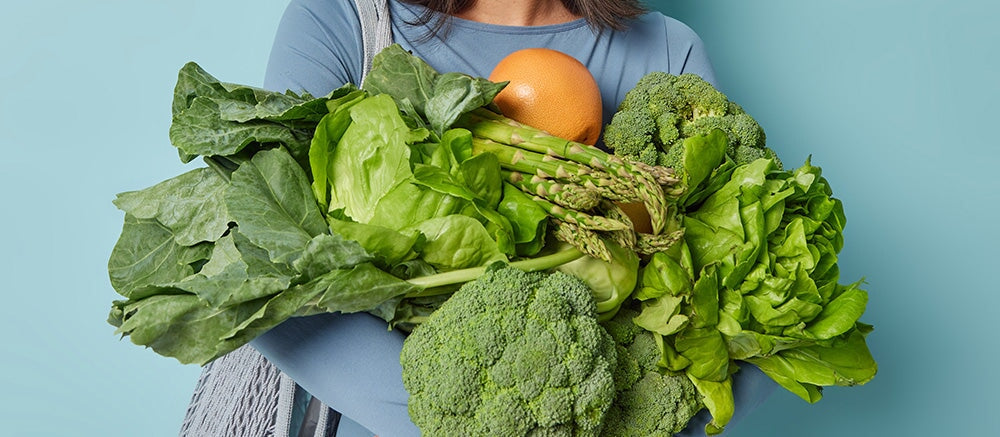Wherever you are in the world, there will always be seasonal produce. Fruits and vegetables and other crops thrive in certain conditions: some prefer the heat, while others, not so much.
While there are days when we crave specific fruits or vegetables, there are many advantages to opting for what is in season.
Read on to understand the benefits of eating seasonally and what spring will bring.
6 Reasons You Should Shop for Seasonal Produce
Your local health food store will always stock seasonal produce, and you’ll notice that some fruits and vegetables are more bountiful than others. They are the products in season.
You should prioritize buying them for the following reasons:
1. Cheaper
When there is an abundant supply of products, prices go down. This is especially true in the case of fresh fruits and vegetables because local sellers will want to unload as many of them as possible before they go bad.

When produce is in season, they are often sourced from local farmers, which means no traveling and storage expenses are added to the cost. When fruits and vegetables are out of season, they are imported from other parts of the globe, which drives up their prices.
2. More Delicious
Because they are grown in the best possible circumstance, seasonal produce is at its freshest. They are also harvested at their peak ripeness, which means they are at their most deliciousness.
3. Healthier
In-season fruits and vegetables are not just tastier but also healthier. For one, they are harvested at the best possible moment of ripeness—when they are packed with nutrients.
And because you will eat them when fresh, you get them at their highest nutritional value.
Fruits and vegetables with vitamin C, carotenes, and folate are best consumed shortly after harvesting, and the value of the vitamins and minerals declines with time. Out-of-season produce is also farmed with more chemicals to help them grow. The modifications take away some of their nutrients.
4. Less Contamination
The problem with depending on other locations for out-of-season fruits and vegetables is that the laws on the use of chemicals are inconsistent. The produce may have been contaminated with chemical and toxic substances during farming and transport.
Local farmers will have an abundance of your favored seasonal fruits and vegetables, and you are assured they are safe for consumption.
5. Environmentally Friendly
Eating fruits and vegetables is always better for the environment. Meat production requires larger land areas to raise the animals. Cows and sheep emit methane during the digestion process. The cattle’s waste also produces nitrous oxide.
Eating seasonal fruits and vegetables reduces your carbon footprint—buying from local farmers means fewer transportation emissions. There is also less refrigeration because the products are at their freshest.
6. Support Local Farmers
It’s a cycle: it is cheaper to buy from local farmers because transportation is minimal to none. Seasonal fruits and vegetables are available at your local markets at a much lower price. When you buy locally, you support farmers who will continue to provide you with fresh, affordable, delicious, and nutritious food.

What’s In Season This Spring?
Here are the top fruits and vegetables that are currently in season, according to the U.S. Department of Agriculture, and their respective nutrient content:
Asparagus
Asparagus is exclusively a spring vegetable. While its green version is the most well-known, you can also find white and purple varieties.
It is rich in nutrients but low in calories and can be consumed cooked or raw. Some of the most popular uses of asparagus are as a shredded ingredient in pasta, salads, and frittata. You can also steam it or wrap it in bacon and then fry or bake it.

Broccoli
Broccoli thrives in spring and fall. The average American eats an average of six pounds of broccoli in a year. Its crunchy characteristic provides added textures to dishes. It can be eaten raw, steamed, fried, baked, or added to numerous dishes.
Broccoli is an important antioxidant. It also contains just as much vitamin C as an orange.

Lettuce
Lettuce is an important ingredient in many recipes, especially in salads. You see lettuce every day in your local grocer, but it is actually a spring and fall produce. Lettuces like arugula, spinach, kale, watercress, bibb, and mustard greens thrive this time of year. All lettuces are low in calories and contain healthy doses of fiber, antioxidants, nutrients, and minerals. However, darker, heartier greens, such as kale, have more antioxidants and fiber in them.

Kiwifruit
Also known as Chinese gooseberry, kiwi is in season almost all year round except summer. It is a refreshing fruit that is native to China and Taiwan. It has since been grown commercially in other parts of the world, especially popular in New Zealand and California.

Strawberries
One of the most popular fruits in the world is harvested in spring and summer. There are many ways to consume strawberries. You can eat them raw, make them into juice, add them to a smoothie, or use them as flavoring in dozens of desserts. Strawberries are also rich in vitamins and minerals.

Rhubarb
Rhubarb is exclusively a spring vegetable. It is as sour as lemon, so it is almost always cooked with sugar. It is not commonly eaten raw but mixed in soup, vegetable dishes, and some desserts.

Stock Up on Spring Fruits and Vegetables
Fruits and vegetables are essential to a healthy diet. They provide the necessary vitamins, minerals, fiber, phytochemicals, and other nutrients to the system.
When you consume seasonal produce, you get the freshest, most delicious, and most nutritious fruits and vegetables. They are also more affordable, and you can help local farmers in the process.
For more tips and tricks for healthy living, browse The Pure Blog.

